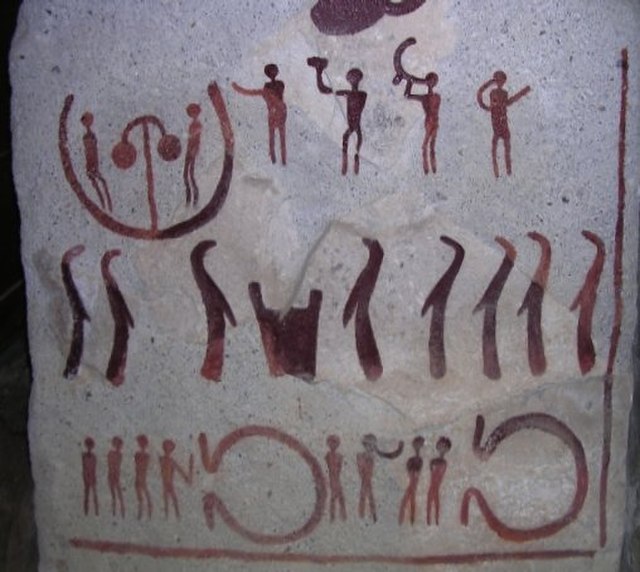Norse cosmology is the account of the universe and its laws by the ancient North Germanic peoples. The topic encompasses concepts from Norse mythology, such as notations of time and space, cosmogony, personifications, anthropogeny, and eschatology. Like other aspects of Norse mythology, these concepts are primarily recorded from earlier oral sources in the Poetic Edda, a collection of poems compiled in the 13th century, and the Prose Edda, authored by Icelander Snorri Sturluson in the 13th century. Together these sources depict an image of Nine Worlds around a cosmic tree, Yggdrasil.
A depiction of the personified moon, Máni, and the personified Sun, Sól by Lorenz Frølich, 1795
A 19th century attempt at illustrating Yggdrasil as described in the Prose Eddaa
North Germanic peoples, Nordic peoples and in a medieval context Norsemen, were a Germanic linguistic group originating from the Scandinavian Peninsula. They are identified by their cultural similarities, common ancestry and common use of the Proto-Norse language from around 200 AD, a language that around 800 AD became the Old Norse language, which in turn later became the North Germanic languages of today.
Depiction of ancient rituals at the Rock Carvings in Tanum, Nordic Bronze Age
Stone slab from The King's Grave in southern Sweden, Nordic Bronze Age, 1400 BC
The gilded side of the Trundholm Sun Chariot, Nordic Bronze Age
The Royal Mounds at Gamla Uppsala contains hundreds (originally thousands) of tumuli mainly from the Vendel and Viking period, but also with a few possible cairns dating back to the Nordic Bronze Age.






